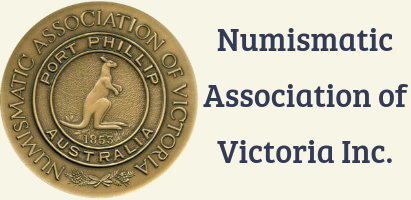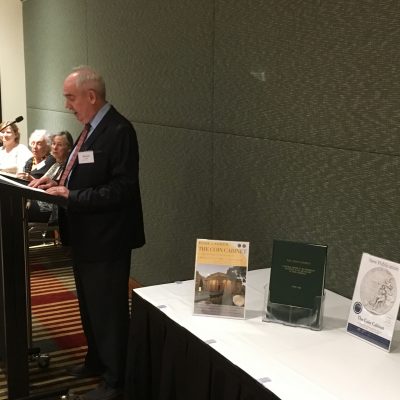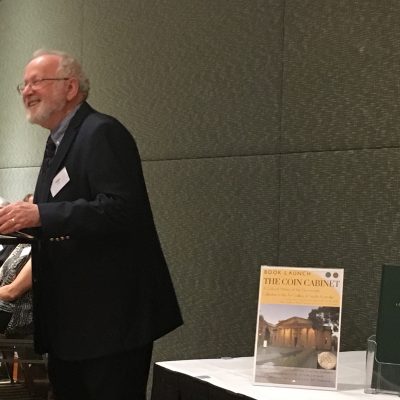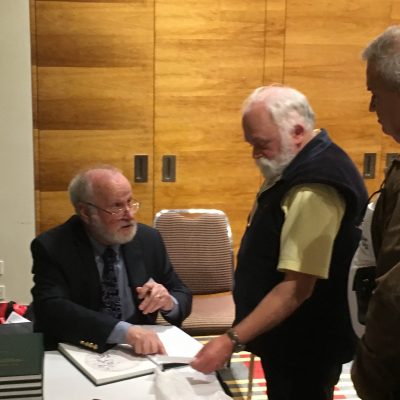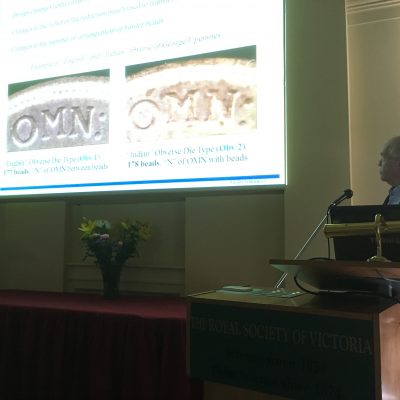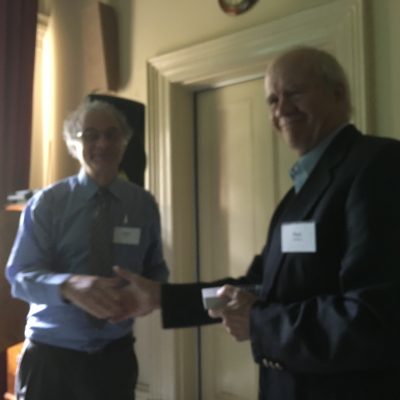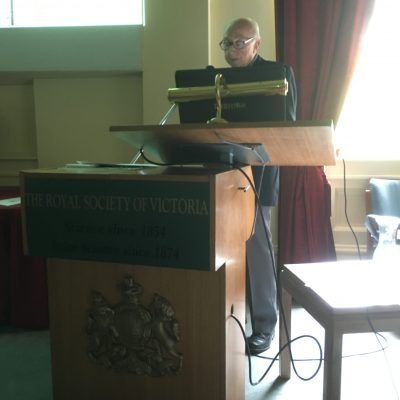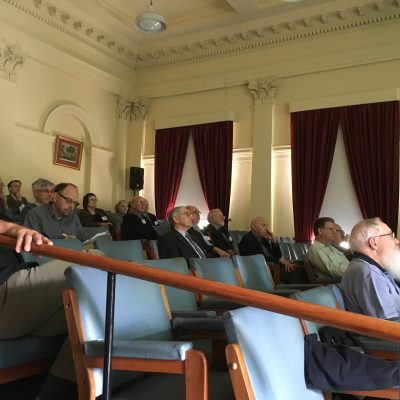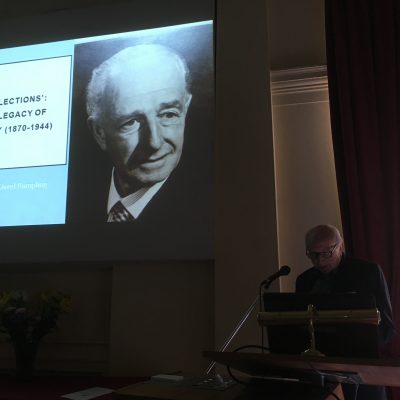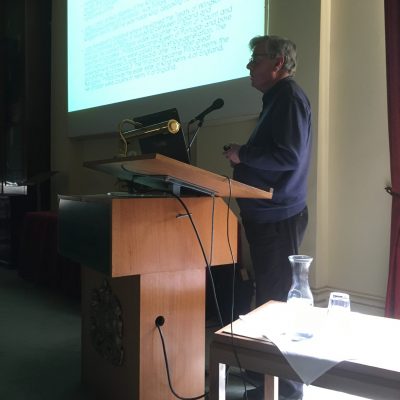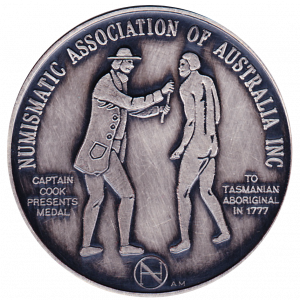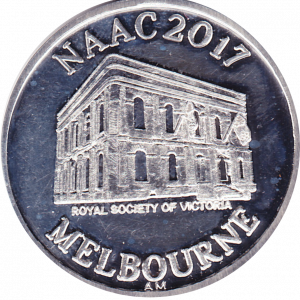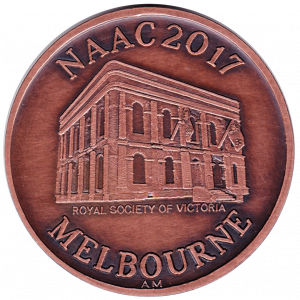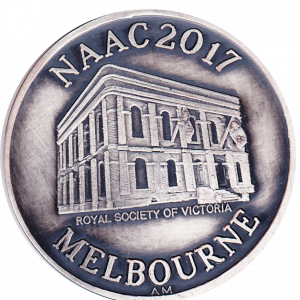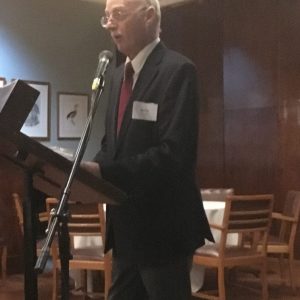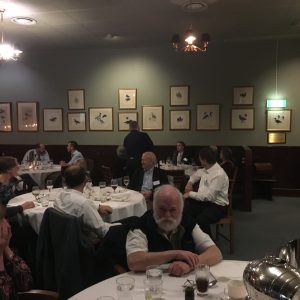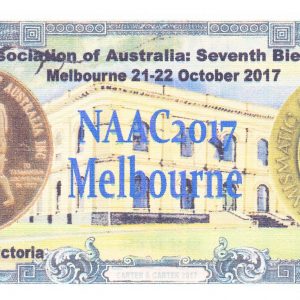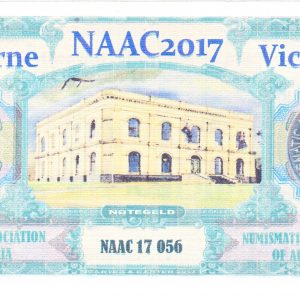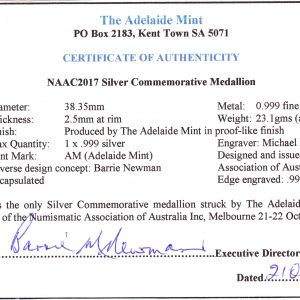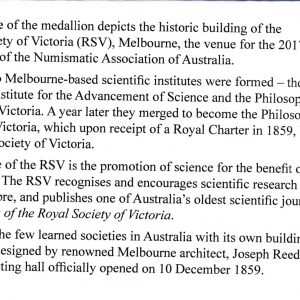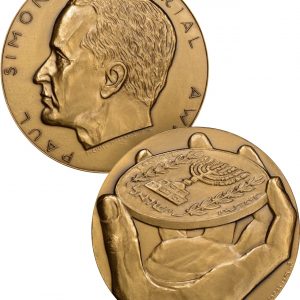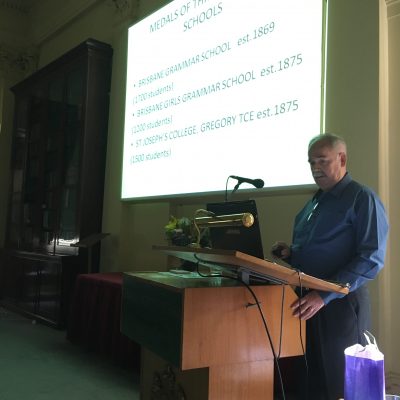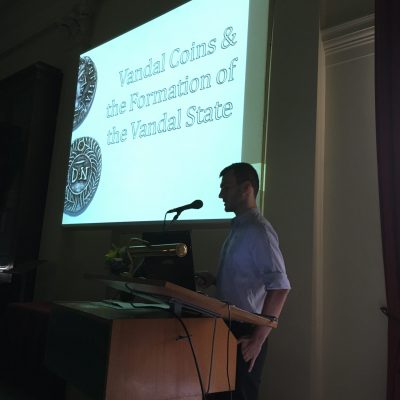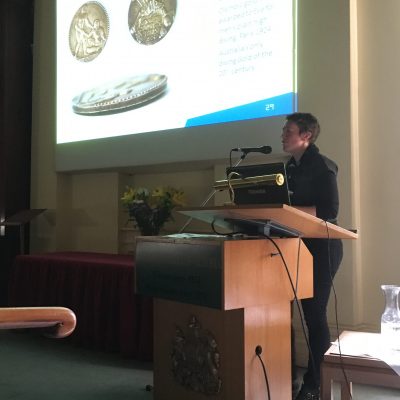National Sports Museum Tour
On the afternoon of Friday 20th November a collection of about a dozen numismatists arrived at that most iconic of Melbourne venues, the MCG. Our host was Helen Walpole, Creative Director at the National Sports Museum (NSM). Our tour started in the plush (and hushed) surroundings of the Melbourne Cricket Club Museum.
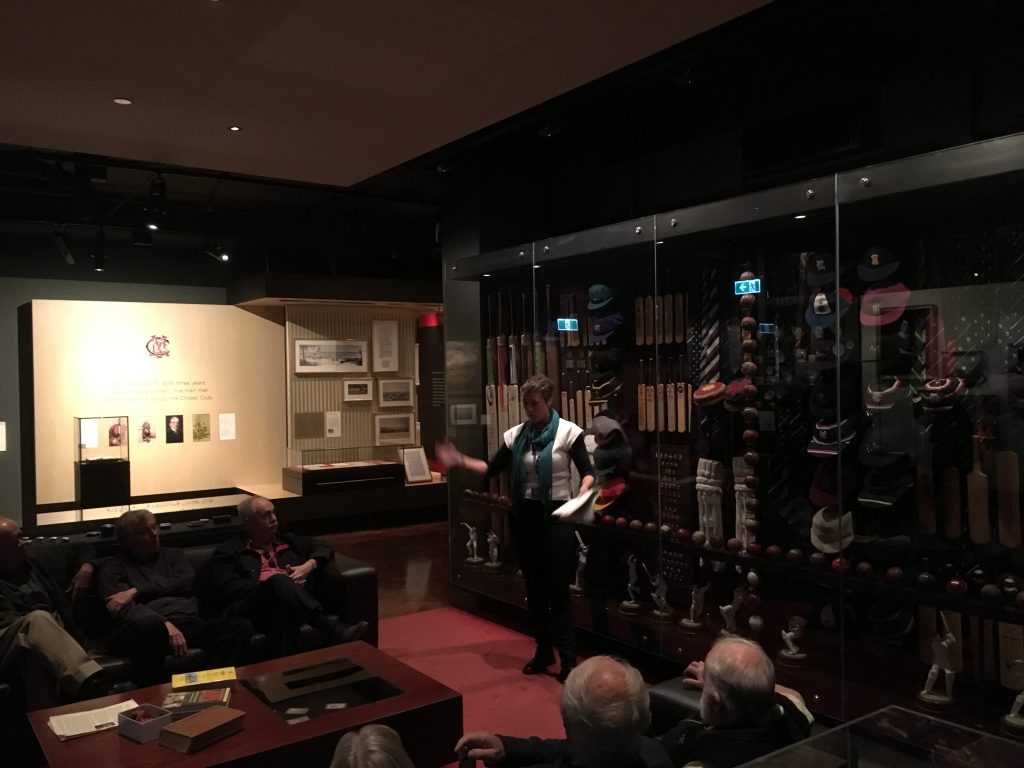
Helen provided an overview of the history of sport in the early days of the colony, key differences between amateur and professional participants, and the purpose behind some awards in the museum. We were then split in to two groups. While some of us perused the Olympic items on display the others were granted access to the inner sanctum to see some of the latest numismatic items to be added to the collection.
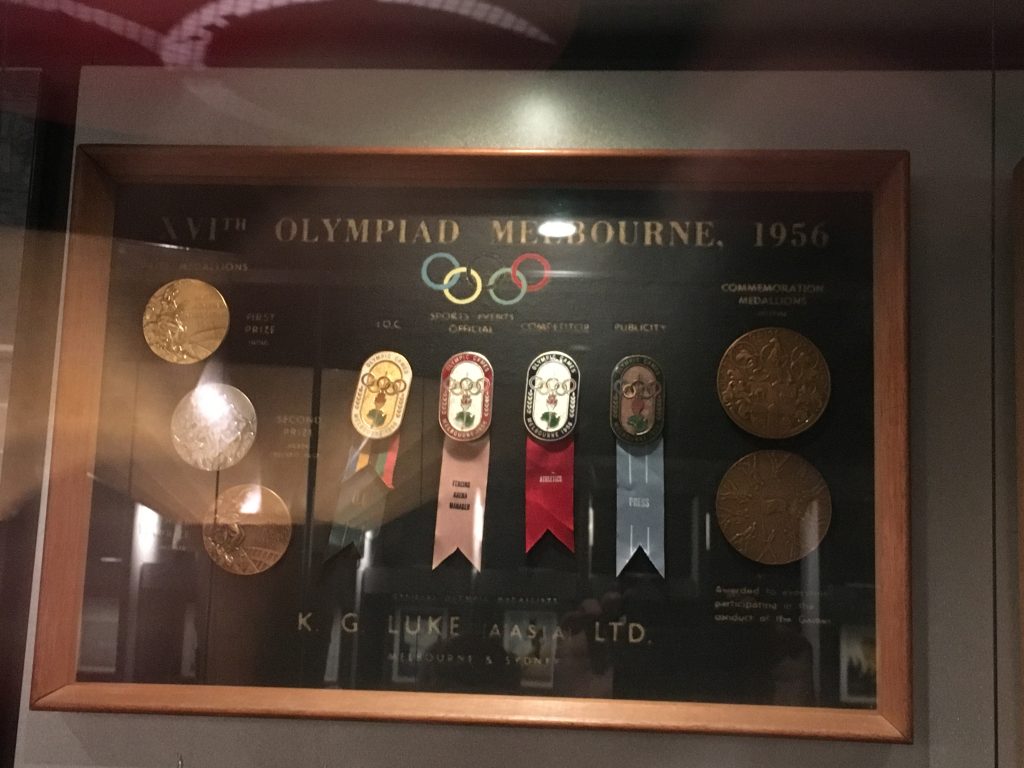
Methods of cataloguing and storage were discussed, which prompted a couple of questions including where the NSM got there generously proportioned Mylar envelopes from. (The answer by the way was they were built to order by archivalsurvival of Wangaratta.) The groups swapped over and reconvened where many attendees made further use of the free entry to the NSM to visit other galleries. The NAA and NAV are very grateful to the NSM and especially Helen who graciously gave her time to not only show us around but also giving visitors a chance to see behind the scenes.
A number of attendees took advantage of the couple of hours available before the reception to visit a number of dealers in town.
Reception & Book Launch

The RACV Club on Bourke Street was home to the reception for the conference. Delegates gathered and chatted before drinks and nibbles were provided. Later in the evening Bernie Begley, of the Australian Numismatic Society (Queensland), gave an introduction to Peter Lane and his new book, which Peter then went on to launch, much to the enjoyment of those present.
The book, entitled The Coin Cabinet, A Cultural History of the Numismatic Collection in the Art Gallery of South Australia, tells the story of the building of the collection of the AGSA and more importantly the people behind it. With over 200 colour illustrations it beautifully illustrates a fascinating range of numismatic items not only from Australia but from all over the globe.
Conference Day 1
Saturday saw the start of the conference with a Plenary talk from American numismatist Paul Holland on “the numismatic complexity of Australian predecimal bronze coinage”. Paul explained what drew him to Australian predecimal bronze before diving in to the detail of how and why a number of varieties are created through the production process.
The remainder of the morning saw a diverse range of topics from David Rampling’s facinating look at Melbourne based jeweller and occasional coin dealer Isidore Kozminsky, to a car park in Leicester (the burial place of Richard III), via Portugal and Warrnambool.
After lunch the conference continued the eclectic mix of numismatic topics including a numismatic history of the Royal Society of Victoria (RSV), hosts of the conference. This numismatic history of the Royal Australian Institute of Architects, German South West African Passes and two papers on metallurgy completed the afternoon’s activities.
Conference Dinner
The Kelvin Club, like the RSV, is another long standing Melbourne based institution based around science. The club played host to the conference dinner where presentations were made to last year’s Paul Simon Memorial Awardee, NAV Vice-President Frank Robinson as well as this year’s recipient Barrie Newman. Ian Armstrong and Mike Carter kindly donated a copy of Mike’s book on Ian’s tokens to be auctioned at the dinner. Also auctioned was a unique example of the conference medallion, struck in Fine Silver by the Adelaide Mint.
Conference Day 2
Day 2 continued the broad range of topics permissible within the study of numismatics. The morning sessions covered medallions and ancient coins and the afternoon feature sporting medals, rare Australian coins, and banknotes.
